If you are new to Adobe Photoshop (and even if you are not) the plethora of editing tools available can be quite daunting. This article explores each tool and how to use them.
But first, let’s look at Photoshop itself. It is a very in-depth application. Photoshop was designed for photo editing, image creation, and graphic design. The software provides many image editing features for raster (pixel-based) images as well as vector graphics. It appeals to photographers, graphic designers, video game artists, advertising, and meme designers.
With depth comes complexity. So that a lite version called Photoshop Elements was created for those users who did not need all of that image power. And in 2013, Adobe came out with Lightroom which was designed specifically for photographers.
What you’ll learn in this article
- 1 A Beginners Guide: Photoshop Toolbar and Tools
- 1.1 How To Customize Photoshop Toolbar
- 1.2 Update 2022: New features and updates in the latest version of Photoshop
- 1.3 Update 2021: Adobe adopts new tools and features in Photoshop CC
- 1.4 Most commonly used Photoshop tools at a Glance
- 1.5 1. Move Tool
- 1.6 2. Marquee Tools
- 1.7 3. Lasso Tools
- 1.8 4. Quick Selection Tool/Magic Wand Tool
- 1.9 5. Crop Tool
- 1.10 6. Eyedropper Tool
- 1.11 7. Spot Healing Brush/Healing Brush/Patch Tool/Content-Aware Move Tool/Red Eye Tool
- 1.12 8. Brush Tool
- 1.13 9. Clone Stamp Tool/Pattern Stamp Tool
- 1.14 10. History Brush Tool
- 1.15 11. Eraser Tools
- 1.16 12. Blur Tool/ Smudge Tool/ Sharpen Tool
- 1.17 13. Dodge Tool/Burn Tool/Sponge Tool
- 1.18 14. Text Tool
- 1.19 15. Pen Tool
- 1.20 16. Shape Tools
- 1.21 17. Hand Tool
- 1.22 18. Zoom Tool
A Beginners Guide: Photoshop Toolbar and Tools
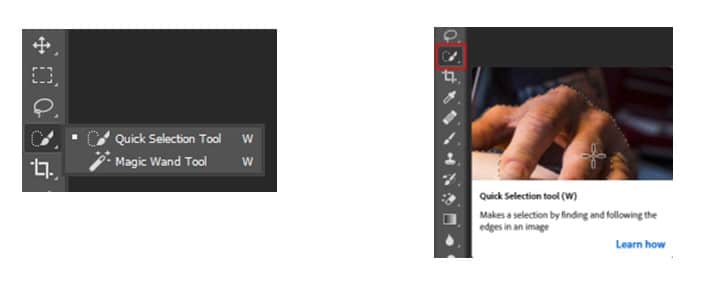
Photoshop has many useful keyboard shortcuts. In this case, instead of right-clicking on the tool, you can press “W” and then “Shift-W” to toggle between the two tools.
Another useful feature in Photoshop CC is that when you select a tool, a little video pops up showing how the tool works. It’s a nice way to reinforce the fact that you have the correct tool.
How To Customize Photoshop Toolbar
From the Edit menu, you can select the Tools… option. The Customize Toolbar window displays to allow you to customize the toolbar depending on your workflow.
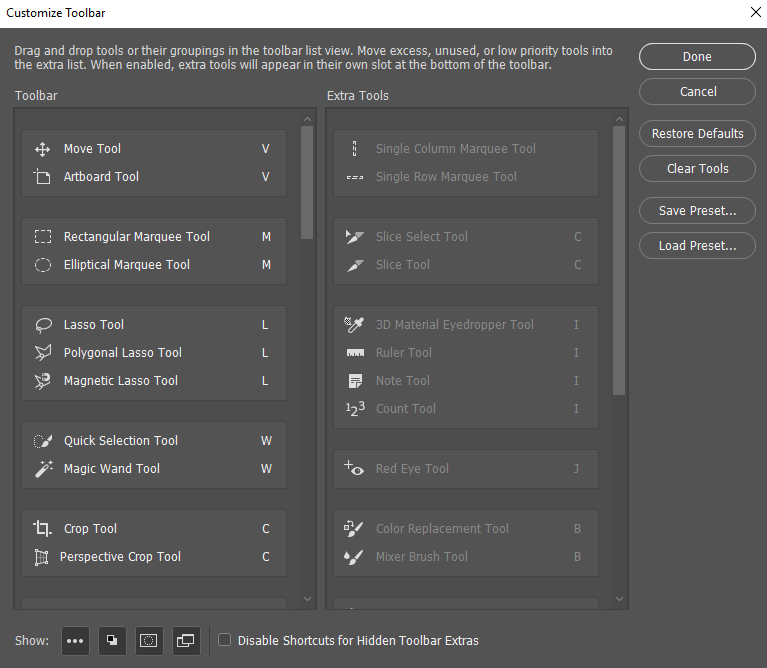
You can:
- Group tools together
- Hide little-used tools
- Display a tool on the Photoshop Toolbar instead of it being nested
- Change the keyboard shortcut for a tool
- Save the customized Photoshop Toolbar to a preset to use at another time
The Photoshop Toolbar can be displayed as a single row or a double row by selecting the two arrows at the top of it.

You can also grab the top bar and drag the Photoshop Toolbar wherever you wish on the Photoshop canvas. We will look at the Photoshop tools in no specific order.

How to Get Toolbar Back in Photoshop
But what happens if I somehow lose the Toolbar? To show the Photoshop Toolbar, simply click the Window menu and then Tools.

Update 2022: New features and updates in the latest version of Photoshop
Photoshop has released its May 2022 update, v23.3.2. Along with new features, it has resolved previous issues and enhanced performance. The working experience with the updated version is better than ever before.
Check here what Photoshop has brought to the table for the photoshop enthusiasts on different platforms!
Features and enhancements came with the April 2022 (v23.3) release of Photoshop Desktop –
Copy-paste text layer from Illustrator
In previous versions of photoshop, the copy-pasted layer used to be rasterized, and the functional fidelity was not maintained. Because of this, editing the text layer was an awful experience.
In the new version of photoshop, one can move text layers from Illustrator with different typographic properties and paste them as editable text while maintaining functional and visual fidelity.
Edge enhancement in Sky Replacement
Edge enhancement is another important improvement in Photoshop. In the newly added Sky Replacement feature, this edge enhancement brought some changes –
- The contrast between the foreground and background around the thin line objects is better preserved
- The halo artifacts are also reduced when replacing a bright sky with a darker sky or vice versa

- A new layer group is introduced in the layer stack of the sky replacement result, which includes two adjustment layers and a less smooth mask than the compositing mask
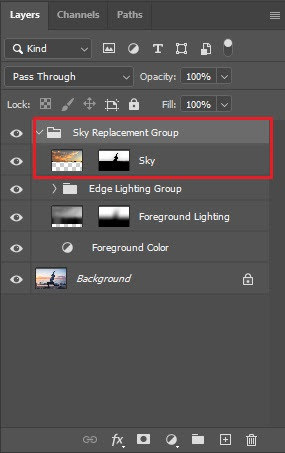
- Edge Lighting slider in the Sky Replacement dialog to control the lighting adjustments applied to the object edges in your sky images
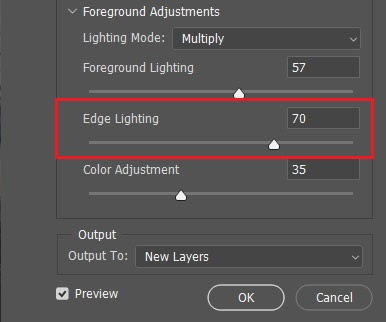
- A new layer group called the Edge Lighting Group is added to the layer stack of the sky replacement result
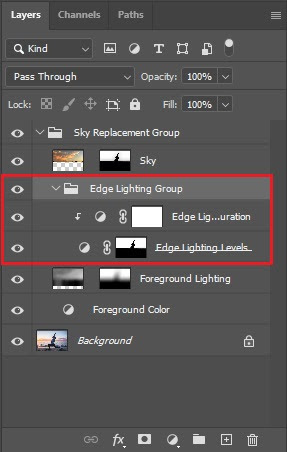
Other Changes :
Multithreaded and GPU compositing
To speed up your workflows, you can now use Multithreaded and GPU compositing options. To activate Multithreaded compositing –
- Go to Preferences
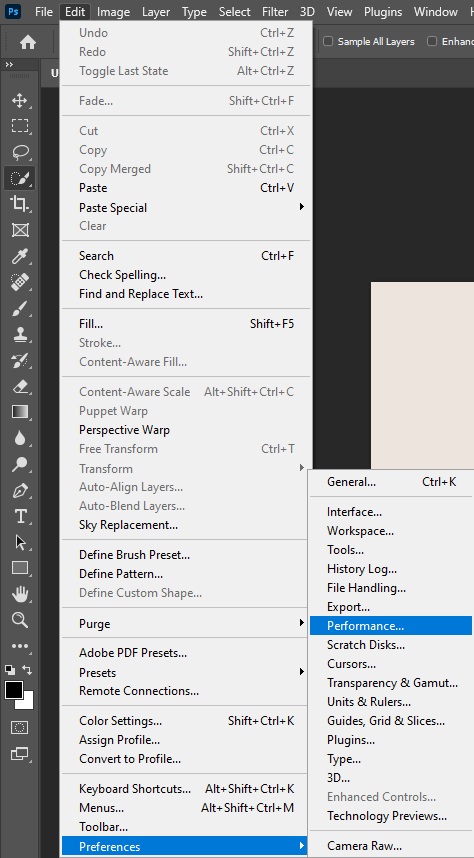
2. Click on Performance
3. Enable Multithreaded compositing
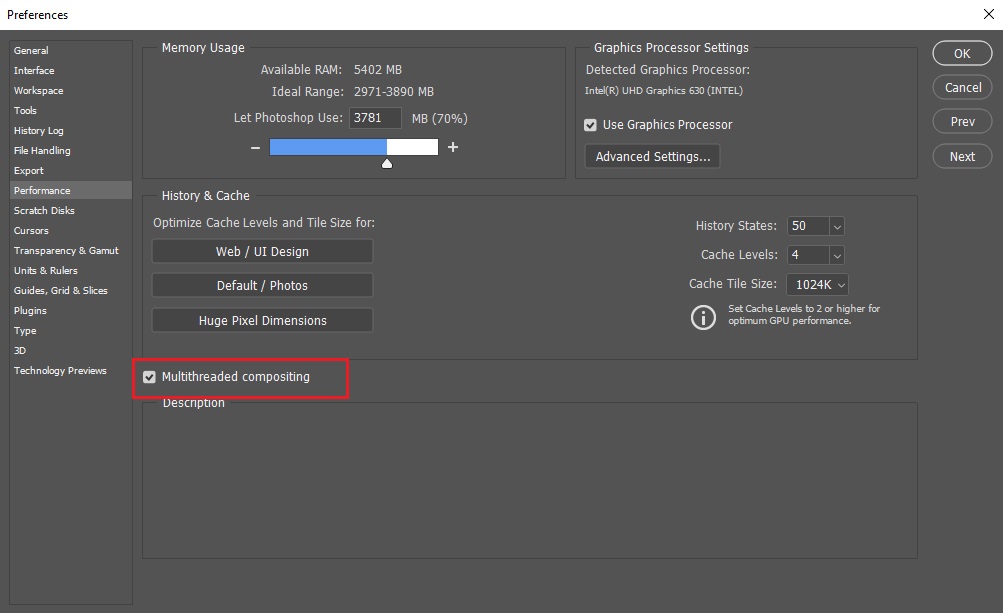
You need to confirm first if Photoshop properly detects your GPU on startup. Otherwise, GPU compositing won’t work. So, to confirm this –
- Go to Preferences

2. Click on Performance
3. Verify that your GPU is listed in the section titled Graphics Processor Setting with a checkmark next to Use Graphics Processor.
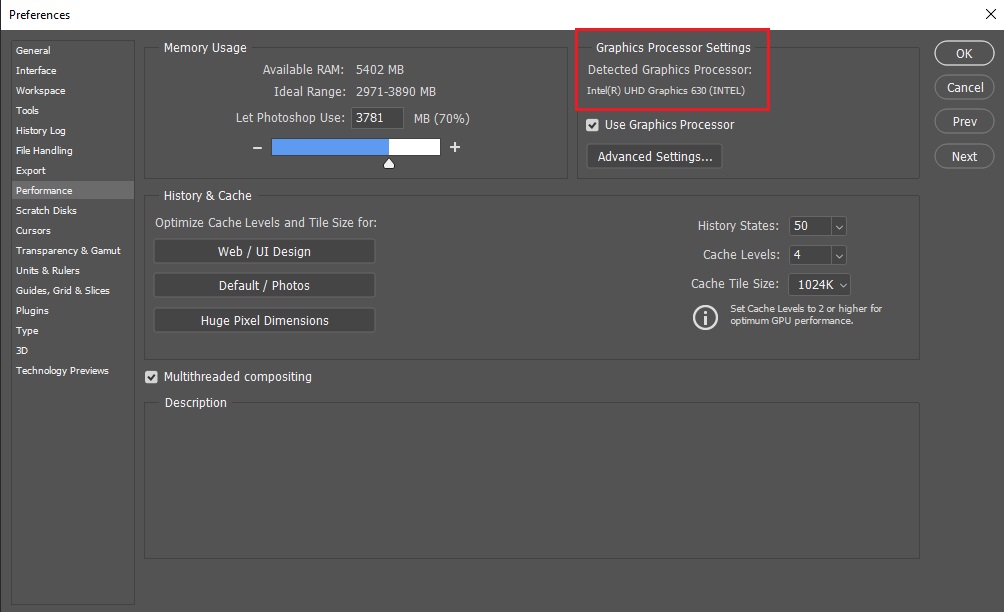
4. To find the checkbox to turn GPU compositing on or off, click the Advanced Settings… button.
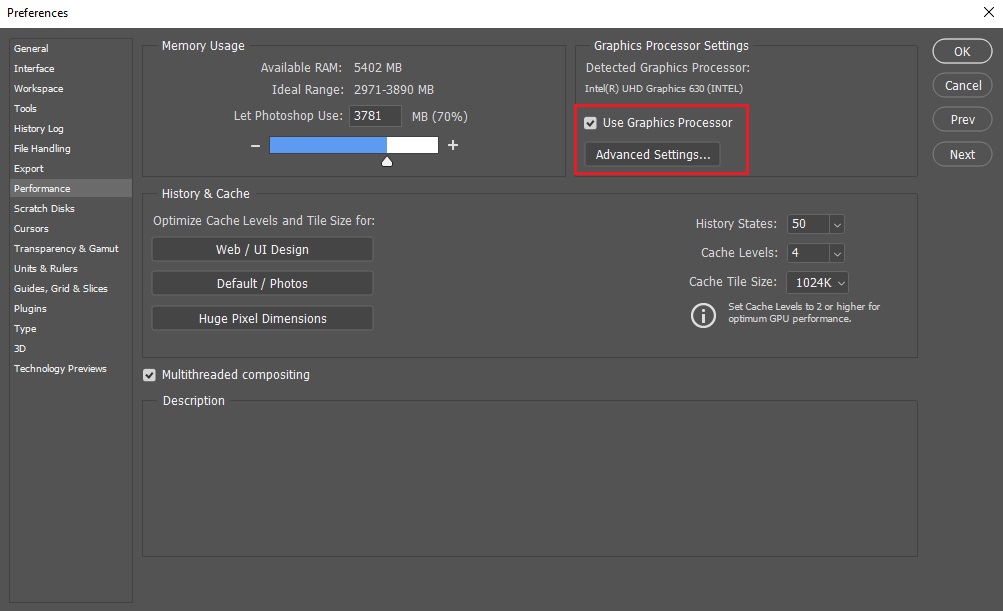
Find your cloud documents in Recents:
Now, you can find your cloud documents easily in Recents. If you go to Files and click on Your Files, Cloud documents that you own, accessed by, or shared with you, and recently used documents will show up.
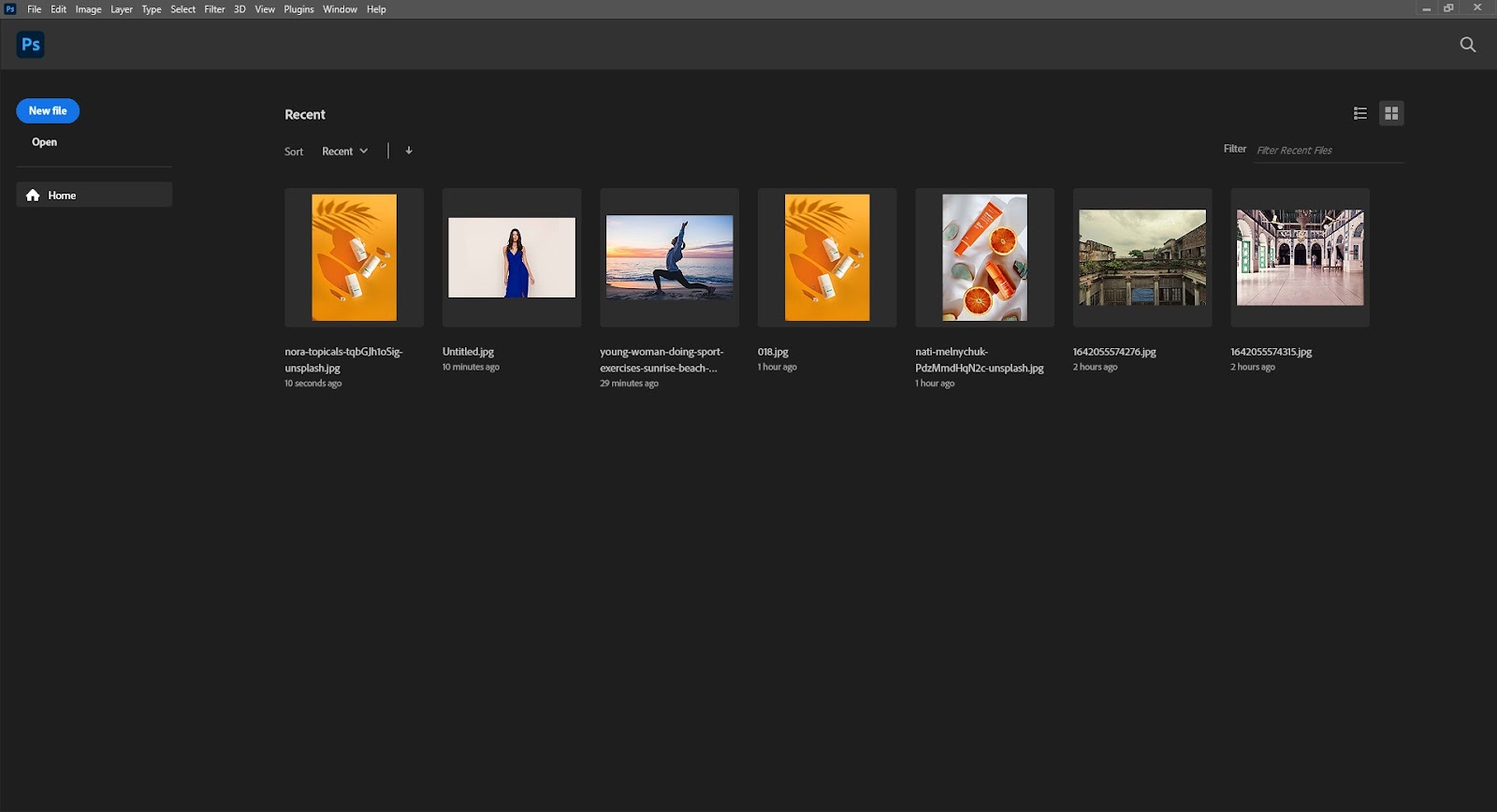
Preference improvement for saving new documents
The new improvement in saving workflow allows you to save your work in the Cloud. Go to Edit > Preferences > File Handling.
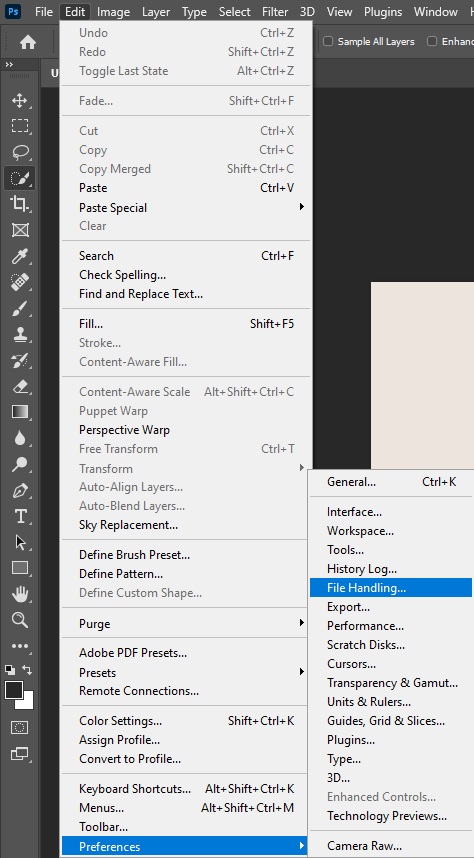
With the popped-up box, you will see the cloud document picker dialog so you can save your files to Creative Cloud along with the option of saving in the local storage.

To go back to the existing ‘Save As’ behavior, set the Default File Location as On your computer.
Removal of Camera Shake Reduction and Quick Share
The Camera Shake Reduction and Quick Share options will be removed from the updated version. Camera Shake Reduction technology is not compatible with newer development platforms, and Quick Share is not used as much as expected. This is to simplify the interface.
New Camera and Lenses
You can check the newly added list of supported Camera Models and Lenses to see if your device is on the list.
Features and enhancements came with the May 2022 (v3.6) release of Photoshop Ipad –
Content-aware fill quick action on the iPad
Previously, this feature was available only on the desktop. Now you can use it on your iPad as a quick action. To get access to this feature –
- Go to Active selections properties bar
- Fill tools
- Actions
You can also get access to this feature from Layer properties > Quick actions.
Auto adjustment commands
This is also a desktop feature that is now available on iPad as a one-tap action. You can use Auto tone, Auto Contrast, and Auto color to correct tone and color imbalances.
Just tap on the Filters and selections in the taskbar on the right of your iPad workspace to use this quick solution.
Other changes
With the new version, you can now view pins and annotations placed in the cloud documents shared with you.
Update 2021: Adobe adopts new tools and features in Photoshop CC
Recently Adobe has revealed the latest photoshop v22.0 version. Adobe Sensei together with Artificial Intelligence (AI) has collaboratively adopted some features and updates in Adobe Photoshop CC 2021.
Adopting more AI-powered features and tools, these updates have surpassed all the expectations and caused a commotion among the users! But why is that? Let’s check those features out in detail.
Neural Filters
Neural Filters are “a major breakthrough in AI-powered creativity.” With a series of outstanding tweaks, it has stolen the show.
The filter uses Adobe Sensei AI algorithms and has simplified the photo-editing works. This smart and manipulative tool can make a total alteration to a person’s facial expression, age, hair thickness, head direction, and whatnot!
Get access to Neural Filter by clicking >Filter from the menu bar.
Then >Neural Filters.

Neural Filters can be categorized into 3 parts-
- Featured Neural Filters: These filters are functional and will surprise the users with the outcome with standards.
- Skin Smoothing
- Style Transfer
- Beta Neural Filters: Beta Filters include some dramatic yet impressive features. It has combined features of popular apps like- FaceApp including changing facial expressions, editing emotions (joy, anger, surprise), and more. It allows users to alter the background, looking direction, hair thickness, smile, age, and more.
- Smart Portrait
- Makeup Transfer
- Depth-Aware Haze
- Colorize
- Super Zoom
- JPEG Artifacts
- Upcoming Neural Filters: These filters will be available in the near future.
- Photo Restoration
- Noise Reduction
- Dust and Scratches
- Face Cleanup
- Photo to Sketch
- Sketch to Portrait
- Pencil Artwork
- Face to Caricature
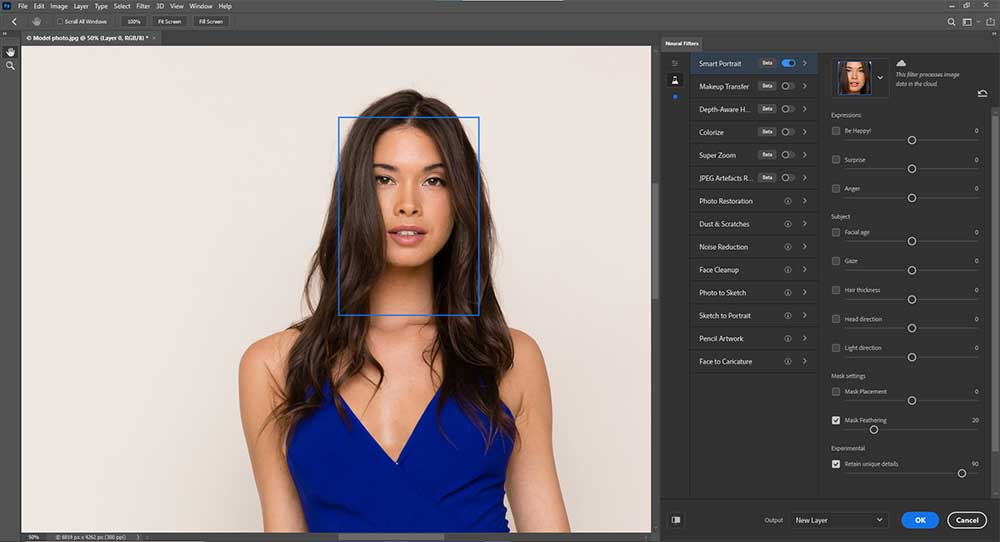
Sky Replacement
Adobe Photoshop has one of these tricky tools named ‘Sky Replacement.’
Now you can change the sky according to your requirement.
Prior to that, the user has to do a lot of work and fine-tuning to get the object under a perfect sky. Now Adobe has made it a lot easier! There are a lot of variations in the sky.
Just follow these 2 steps.
>First, click Edit.
>Then choose Sky Replacement.

Use of Sky Replacement

Color Grading
One of the new features is the Color Grading option. It has replaced the Split Toning.
>Go to Filter. >Then click Camera Raw Filter.
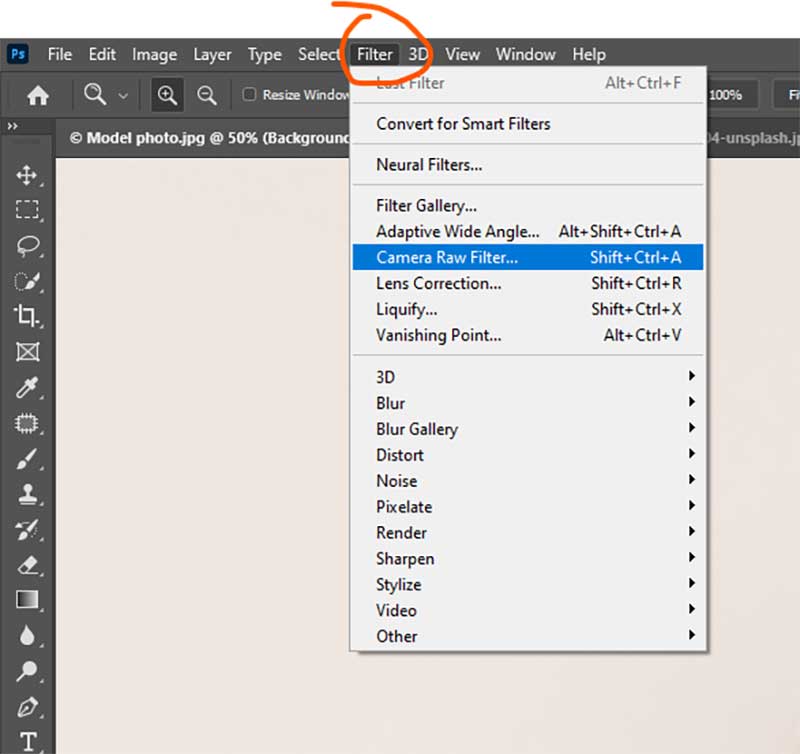
A Panel with various options will show up.
Scroll down to Color Grading.
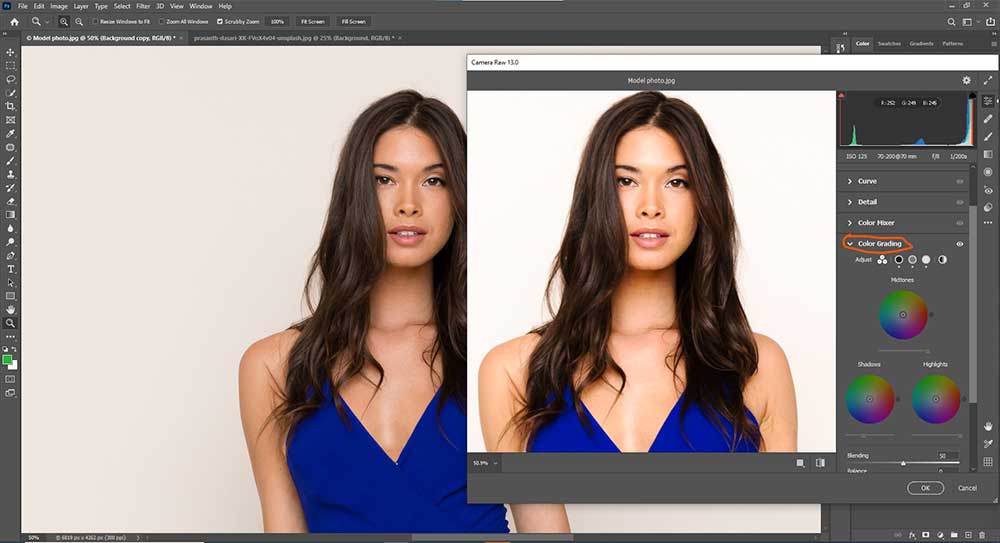
Click it and start working with the 3 color-wheels.
Pattern Preview
Earlier users have to work a lot to work on the pattern, especially for textile designs. Adobe’s latest ‘Pattern Preview’ has eased the process and ended those complications.
To operate this tool, > click View on the menu bar.
>Then go to Pattern Preview.
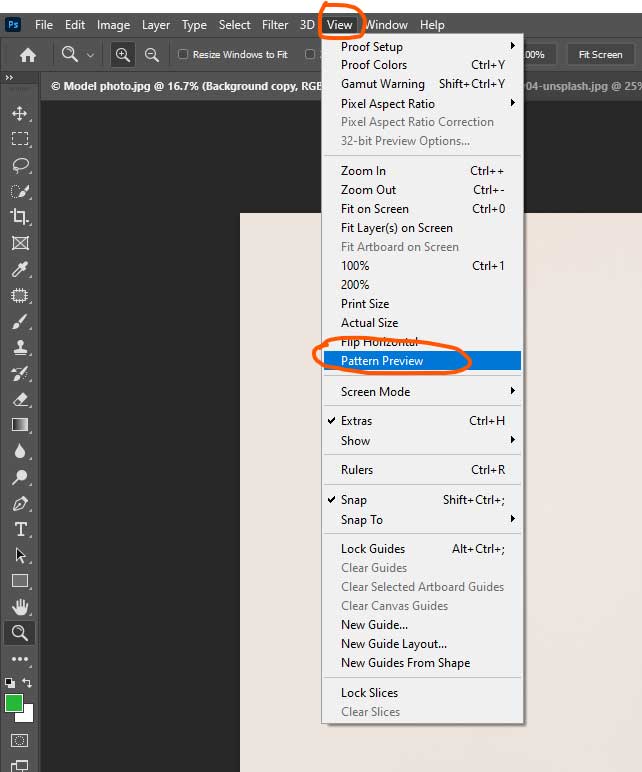
With this tool, users can get a real-time infinite preview of the pattern they want to create. Thus, they can create seamless patterns without the requirement of a box.

A box-shaped boundary will be shown after enabling the tool. So, when anyone draws and colors anything, it will be repeated around that boundary as well.
Live Shapes Enhancements
The shape tools of photoshop have been provided with some dynamic features and enhancements in photoshop V22.0.
Now users can transform the canvas without any difficulty. It also helps them control radius, they can apply changes to any corner, and the changes will be made automatically on other corners as well.
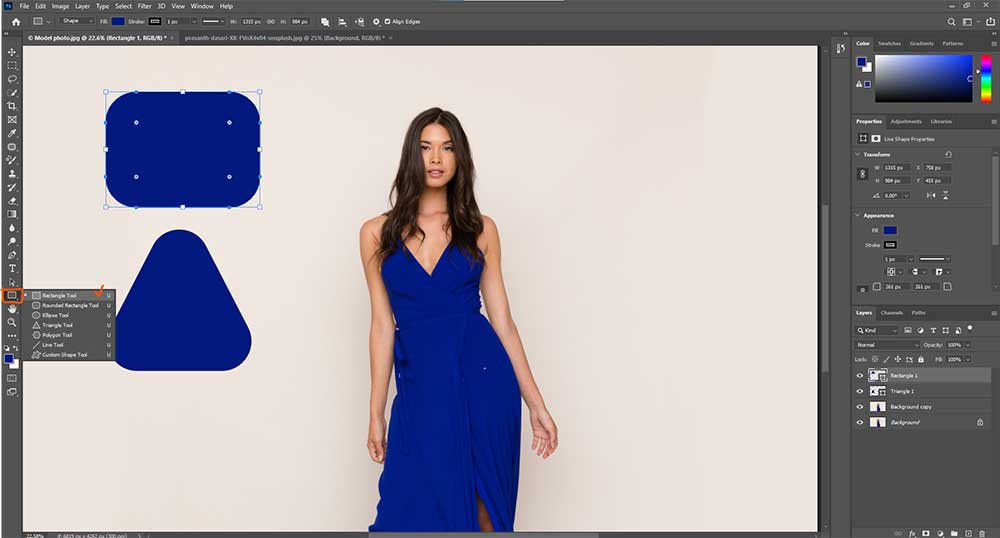
Not to mention the newest addition of Triangle Tool and Line Tool.
Moreover, under the Live Shapes Properties, each shape tool has its own set of properties to attribute changes.
To use this feature, >go to the Toolbar and >click Shape Tool.
Choose any shape and draw it.
These amazing features allow users to tweak shapes’ height, width, or rotate it as per their needs.
Reset Smart Objects
Reset smart objects is another powerful feature. It allows users to perform any adjustments. Regardless of transformations or distortions that have been made on the object, it will restore its original form.
All you have to do is to >choose Layer.
>Then go to the Smart Object option and reset transform.
>Or right-click the Smart Object layer and choose reset transform.
Preset search
Another smart option by photoshop V22.0 is the Preset Search. Now you can search for anything,e.g., brushes, colors, shapes, gradients, patterns, and so on inside the panel.
>To collapse or expand preset folders, use CMD (macOS) or Ctrl and click the enclosure arrow on the preset folders.
>A panel will open with a search bar.
>Start typing whatever you are searching for, and it will show up.
Generally, photoshop has its own presets; however, you can set your own too.
Brush Tool Search
Not only the preset panel has its own search bar where you can find brushes, so has the Brush Tool.
>To find any specific brush, choose the Brush Tool or tap ‘B.’
>Click on the drop-down bar of brushes to find the search bar.
And there you are!
Automatic Preset Sync
The big news is that all the presets are now synced in Photoshop v.22.0. In the General option from Preference, the Preset Syncing is automatically enabled.
Select & Mask enhancements
This workspace has made the selection and masking process a lot easier and quicker than before. It has replaced the Refine Edge and the Refine Mask dialogue boxes in the earlier version of photoshop.
>Launch it by pressing Ctrl+Alt+R (Windows) or COMMAND +Option+R (Mac).
>Or click Lasso Tool, Magic Wand, or Quick Selection Tool from the options bar. Then on the top, the Select and Mask button will show up.
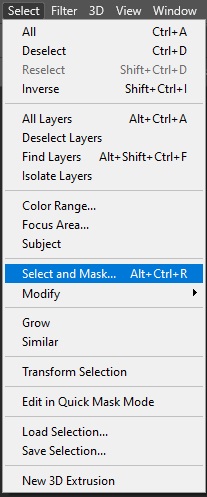
You can select a comfortable view, transparency level, radius, smooth, and so much more. You can preset your canvas as well.
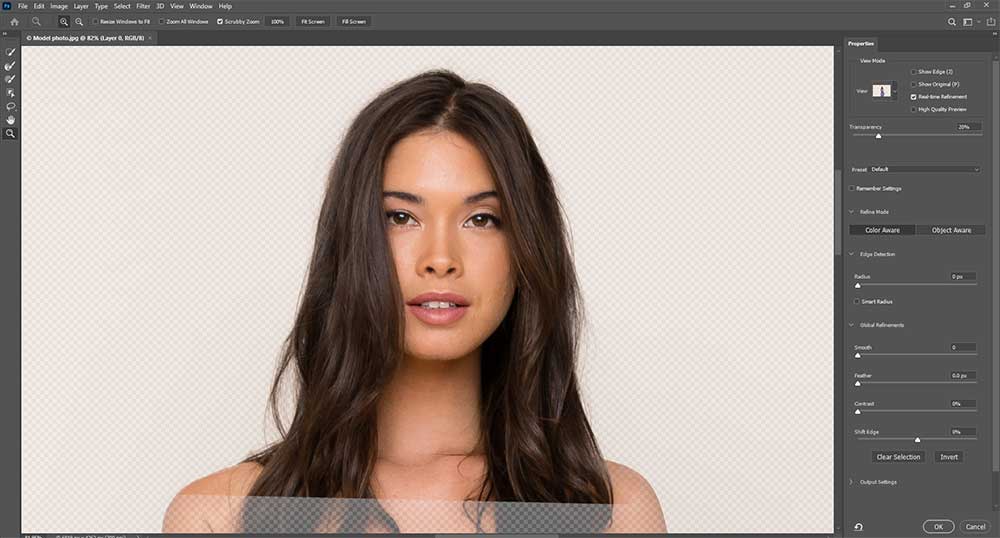
Refine Hair
The new Refine Hair Tool has sped up the process done by ‘Refine Edge Brush Tool.’ You will find the ‘Refine Hair’ button under Select & Mask enhancements.
>Select your subject using Pen Tool, Object Selection Tool, or Quick Selection Tool, and then click the ‘Select and Mask’ button.
>Then you will find the ‘Refine Hair’ option.
>Hit the button, and the hair work will be done automatically.
Select Subject
Inside the Select and Mask Workspace, you will find the updated Select Subject button. It selects the object and its edges better and smoother just with one click.
Content-Aware Tracing Tool
The Content-Aware Tracing Tool is one of the interesting tools. It works similar to the ‘Magnetic Lasso Tool.’ This tool is used for tracing designs.
All you have to do is to >go to Edit.
>Then Preference, and after that, >click Technology Previews.
>Enable the tool. (Then restart Photoshop.)
By then, it will be listed in the ‘Pen Tool’ group.
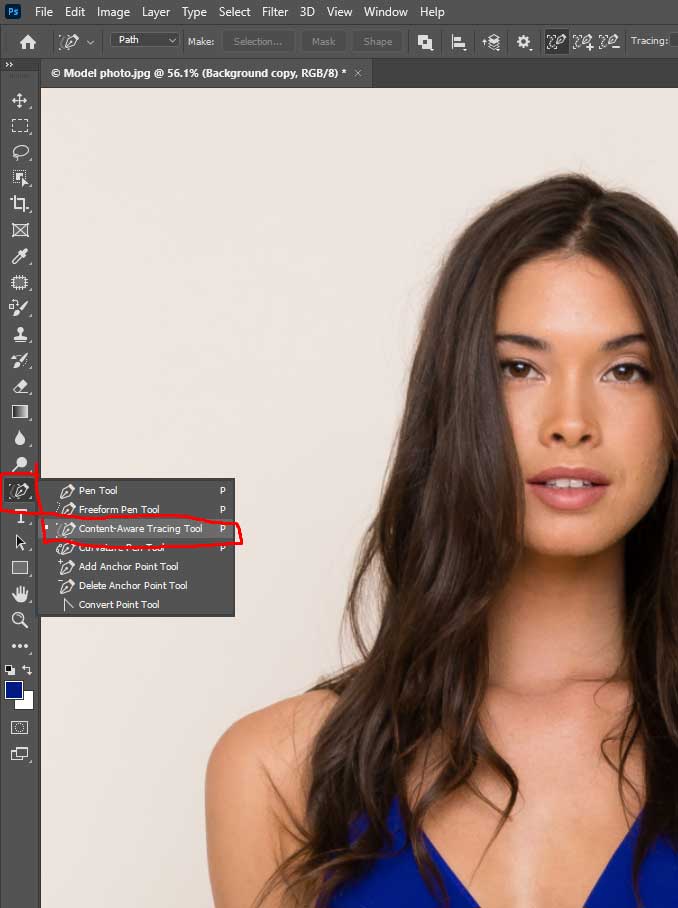
So, when you select this and hover over the objects, it will trace image edges into paths.
Content-Aware Fill improvements
Content-Aware Fill improvements are so far the best removal techniques in the latest version of photoshop.
When you want to obliterate an object from your image, choose any selection tool, and select that.
>Click Edit, then >Content-Aware Fill.
Or, >get quick access by right-click selections directly on your canvas.
A panel will open up and tick the Scale box, hit the ‘Ok’ button.
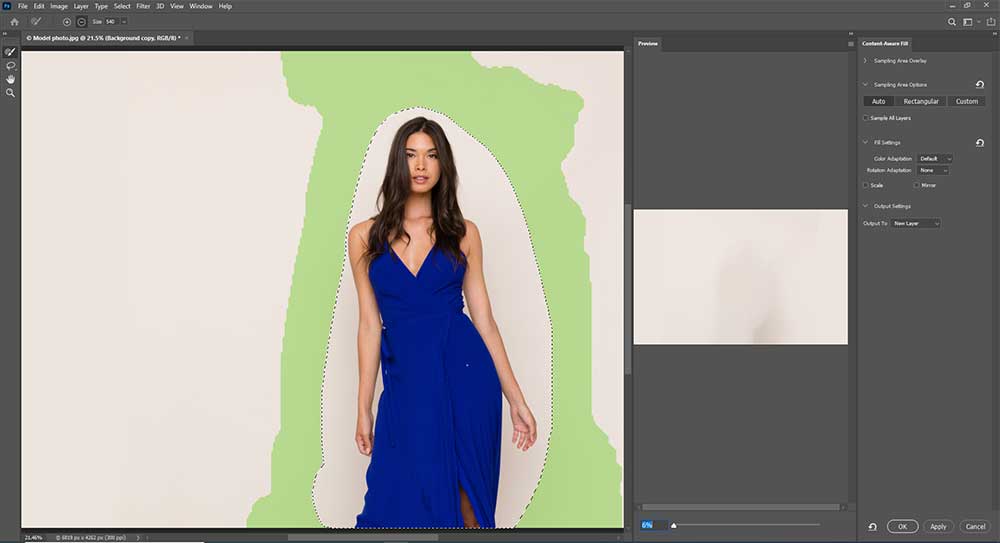
However, this tool works better in a calm background. The chaotic background may not get you the expected results.
Quick Actions
Adobe has adopted a few other convenient features in its latest version. As a whole, these are called ‘Quick Actions.’
Open any image and click the ‘Help’ button. Then Photoshop Help, which will lead you to ‘Quick Actions.’
A panel will appear with some quick actions, which are all set to go.
Use plug-ins Faster
By now, you probably have noticed the brand new ‘Plugins’ option on the menu bar. Either click the Plugins Panel to discover more or Browse Plugins. Either of these will open up a new ‘Creative Cloud Desktop’ application.
Now you can install any plugins you need to work on.
Enhanced Cloud Documents
The new Enhanced Cloud Documents will automatically keep your work updated anywhere, anytime with syncing experiences. Get access to your cloud by clicking the Home button from photoshop and then go to the Cloud Document.
To create a document in the cloud, >go to File, then >click Save As.
>Choose Save to Cloud Documents.
A dialogue box will pop up, save the images in the cloud.
You can save it offline as well.
Version History
Under the Enhanced Cloud Documents, the Version History option preserves and manages all the adjustments you made in your documents.
To check this out, go to File, then Version History.
Or click Window and then Version History.
Actual Size update
Under the View option of the menu bar, you will find the Actual Size option that is now giving an accurate size of an image. It considers the resolution and the size of the monitor and then measures the printing size.

Discover Panel
The new Discover Panel helps users to find any tool or any suggestion.
To bring the Discover Panel-
>Click Help from the menu bar,
>or click the search icon on your photoshop,
>or press Cmd (macOS) /Ctrl + F in shortcut.
Search anything you want to find. For example, you want to find the dodge tool, type it in the search box, and it will pop up directly and point you out where it is.
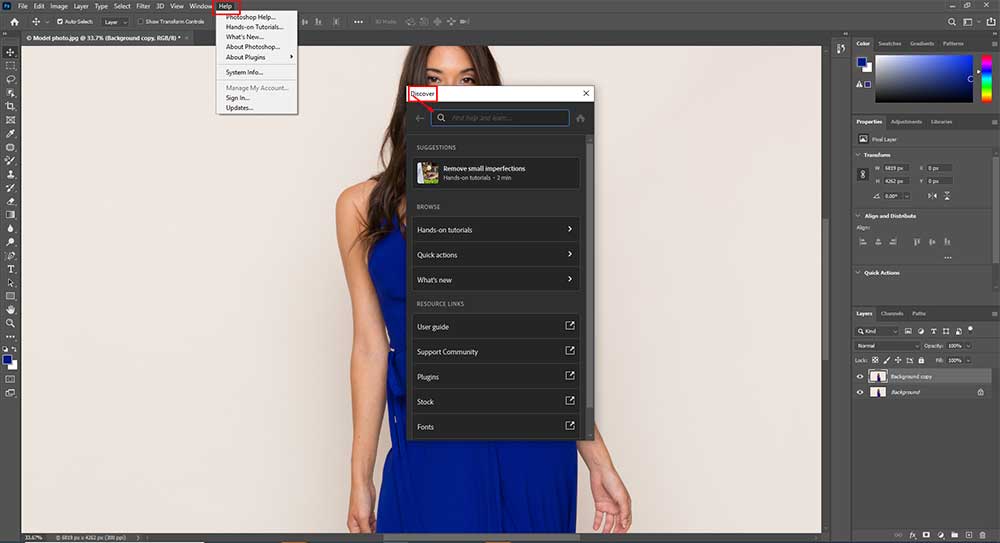
On the right side of this panel, you will find the home icon. By clicking it, you will see ‘Hands-on tutorials.’ Search your query there, and photoshop will guide you with on-screen overlays throughout the steps.
Most commonly used Photoshop tools at a Glance
- Move Tool – To move a part of any image.
- Marquee Tools – To give any particular shape of an image.
- Lasso Tools – To make any selection on an image.
- Quick Selection Tool/Magic Wand Tool – To make a quick selection.
- Crop Tool – To crop any part of an image.
- Eyedropper Tool – To sample a color from any image.
- Spot Healing Brush/Healing Brush/Patch Tool/Content-Aware Move Tool/Red Eye Tool – To fill or remove in any area in an image.
- Brush Tool – To retouch the image.
- Clone Stamp Tool/Pattern Stamp Tool – To clone of copy image information.
- History Brush Tool – To undo any tool used earlier.
- Eraser Tool/Background Eraser Tool/Magic Eraser Tool – To remove any section of an image.
- Blur Tool/Smudge Tool/Sharpen Tool – To blend color in various ranges.
- Dodge Tool – To highlight in different tone on any image.
- Text Tool – To write text anyway.
- Pen Tool – To draw paths around objects.
- Shape Tools – To give various shapes.
- Hand Tool – To move any area of an image.
- Zoom Tool – To zoom in and zoom out.
We will be using the following image whenever possible to demonstrate each tool.
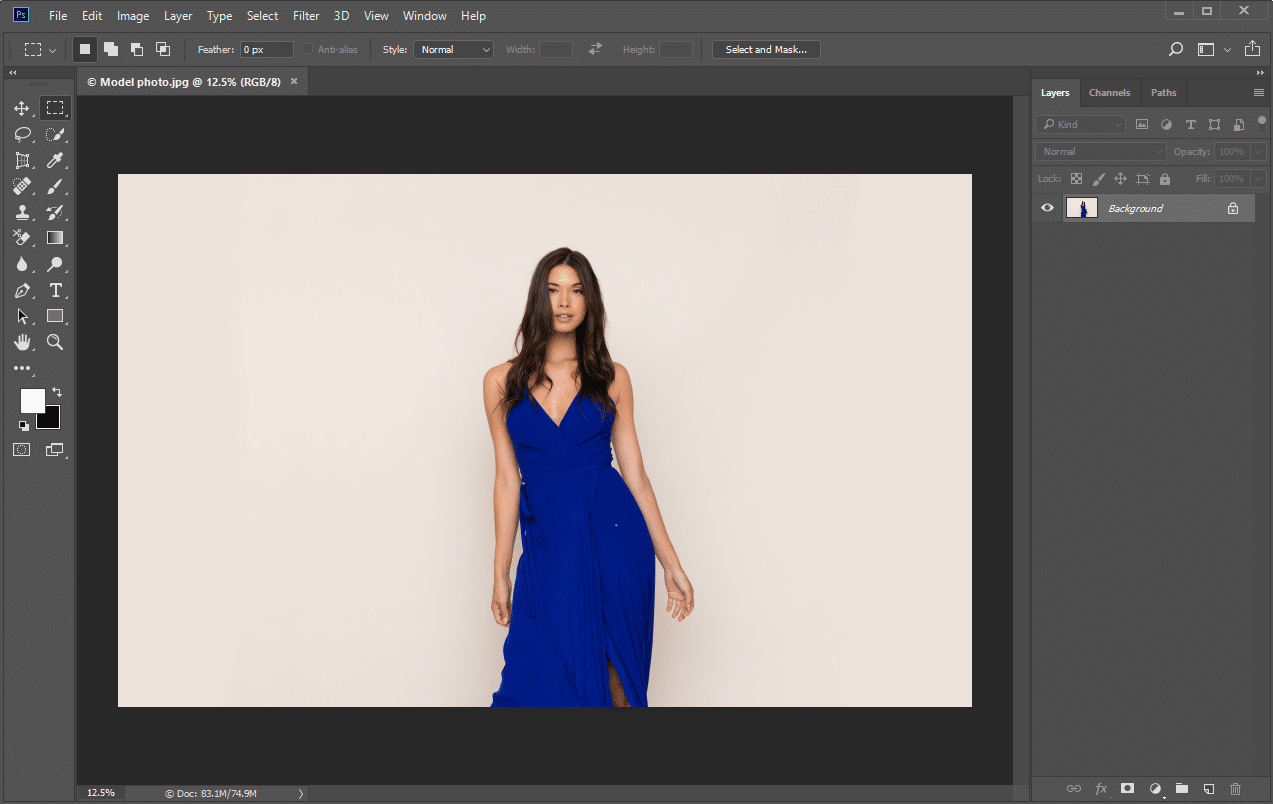
1. Move Tool
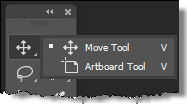
The Move Tool allows you to move part of a layered image to a new location. The very first thing that you need to know about the Move Tool that it only works when there is something to move inside the image.
If your image has one layer and it is locked, the Move Tool cannot do anything to move the image. You need at least two layers to use the Move Tool. You can also use Move Tool with a single layer provided the single layer is unlocked.
In the image below, the window to the left of the model is in its own layer.

Select the Move Tool and drag the window to another position.

2. Marquee Tools
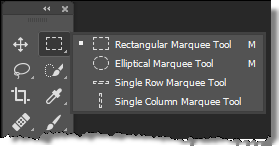
There are several marquee tools that allow you to select areas in an image.
NOTE: With any of the selection tools, you can hold shift to add to your selection, and hold option/alt to subtract from the selection.
I. The Rectangular Marquee Tool

It makes a rectangular selection on your Photoshop image.
II. The Elliptical Marquee Tool
It allows you to make a round selection.
III. The Single Row Marquee Tool
It makes a 1px horizontal selection that spans the total width of your image. This can be used to create a 1px repeating pattern for your website content.
IV. The Single Column Marquee Tool
It makes a 1px vertical selection that spans the total height of your image. This can be used to create a 1px repeating pattern for your website content.
3. Lasso Tools
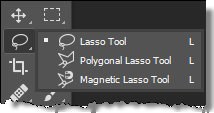
There are several lasso tools that also allow you to make selections.
I. Lasso Tool
The Lasso Tool lets you make loose selections around anything on a layer just like a lasso. It has the same options as the marquee tools.
II. Polygonal Lasso Tool
The Polygonal Lasso Tool allows you to make selections, but only in a linear way. That is, you can only draw straight lines for your selections.
III. Magnetic Lasso Tool

The Magnetic Lasso Tool allows you to drag your mouse over the edges of an image, it determines where the edges are, and anchor points are placed at regular intervals. This gives you a very close and controlled selection.
4. Quick Selection Tool/Magic Wand Tool
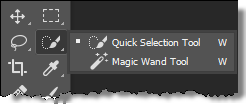
These two tools allow you to make quick selections in slightly different ways.
I. Quick Selection Tool

The Quick Selection Tool makes a selection based on the edges of objects. As it is with the name, it makes selections quickly, and you can just drag over the areas that you want to select.
II. Magic Wand Tool
The Magic Wand Tool makes a selection based on where you click your mouse. As with other selection tools, you can hold Shift to add to the selection and hold Option/Alt to take away from your selection.
5. Crop Tool
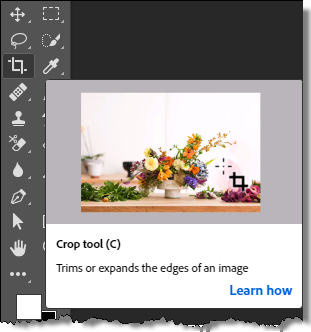
As we mentioned before, you can also see a short video of each tool to make sure you have the correct one for your workflow as seen above.
I. Crop Tool

The Crop Tool allows you to crop an image to the sizes that you want. You can input a set ratio, such as 4 x 6 in the ratio, or you can also set a fixed size and resolution for your cropped image.
II. Perspective Crop Tool
III. Slice Tool
IV. Slice Select Tool
6. Eyedropper Tool

I. Eyedropper Tool

The Eyedropper Tool allows you to sample a color from any image so that you can use it in your work. You can control the color area that it samples; it can sample a pixel, or it can sample a range of pixels. Also, you can sample the current layer or all layers.
II. 3D Material Eyedropper Tool
III. Color Sampler Tool
The Color Sampler Tool allows you to sample up to four areas of color within your image so that you can have information about those colors. Like the Eyedropper Tool, you can determine the range of pixels that it samples.
IV. Ruler Tool
V. Note Tool
VI. Count Tool
7. Spot Healing Brush/Healing Brush/Patch Tool/Content-Aware Move Tool/Red Eye Tool

I. Spot Healing Brush Tool

The Spot Healing Brush is a great tool for removing blemishes from images. It works with a simple click of the mouse by sampling the surrounding areas and blending the blemish away.
II. Healing Brush Tool
The Healing Brush Tool allows you to brush out blemishes and areas that aren’t desired in your images. Unlike the Spot Healing Brush, the Healing brush requires you to select a reference point.
III. Patch Tool
The Patch Tool is a great tool where you can make a selection that is similar to the Lasso Tool. Once the selection is made, you can click and drag it to the area to fill it with and when you release it, it patches that area with the selected content.
IV. Content-Aware Move Tool
The Content-Aware Move Tool intelligently tries to fill in any moved content with what it perceives to be there. For example, a rowboat on a beach can be moved, and Photoshop will try to fill in the sand that would be behind the boat.
V. Red Eye Tool
The Red Eye Tool is a quick way to click on portions of an image that have red-eye and remove them instantly.
8. Brush Tool

I. Brush Tool

The Brush Tool is one of the most important tools that are in your Photoshop toolbox. You will probably use the Brush Tool more than any other tool in Photoshop, especially if you are retouching images. You can change the size of the brush, how hard it is, its shape, texture, opacity, flow, and more.
II. Pencil Tool
The Pencil Tool allows you to draw on an image like you were using a real pencil, hence the name.
9. Clone Stamp Tool/Pattern Stamp Tool

I. Clone Stamp Tool

The Clone Stamp Tool is used to clone or copy image information from one area to another. You can hold the Option/Alt key and click an area of an image. Then, click the image to brush with the color and image information that you sampled.
II. Pattern Stamp Tool
The Pattern Stamp Tool gives you the ability to use a brush-type tool to paint a pattern or texture on your image.
III. Color Replacement Tool
IV. Mixer Brush Tool
10. History Brush Tool
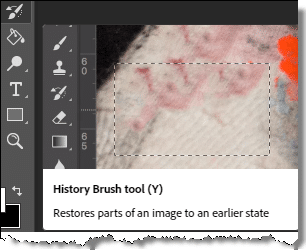
I. History Brush Tool

With this tool, you can paint with an image snapshot in a different layer. This lets you bring in details from a previous point in your work. It’s like an Undo feature.
I. Art History Brush Tool
11. Eraser Tools
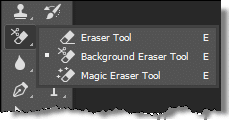
I. Eraser Tool

The Eraser Tool removes pixel information from your image just like a real eraser. You use brushes, which you can specify just like any other brush-related tool in Photoshop such as hardness, shape, texture, opacity, and flow.
II. Background Eraser Tool
The Background Eraser Tool is an awesome tool for removing the background from an image. Click and drag the eraser along the edges of an image and its background and it will remove the background. This isn’t perfect but it goes a long way toward the goal.
III. Magic Eraser Tool
The Magic Eraser Tool removes a section of the background of an image and is based on the area that you click on. It does a good job, but sometimes it removes areas that aren’t necessary, requiring some trial and error.
12. Blur Tool/ Smudge Tool/ Sharpen Tool
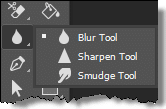
I. Blur Tool
The Blur Tool lets you blur parts of an image, which can help with harsh contrasts between images. Like the Sharpen Tool, it behaves just like a brush and gives you accurate results.
II. Sharpen Tool
The Sharpen Tool gives you the ability to sharpen areas of an image by painting on them. This gives you a lot of control and accuracy when sharpening images.
III. Smudge Tool

The Smudge Tool works like a brush too, but it “smudges” pixels and allows you to push them around. It allows you to blend and transition colors easily.
13. Dodge Tool/Burn Tool/Sponge Tool
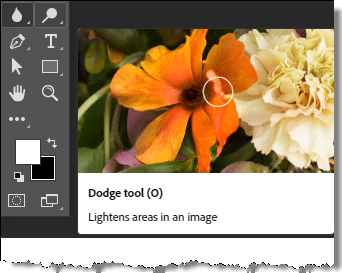
I. Dodge Tool
The Dodge Tool lets you paint in highlights in the different tone ranges of your images.

The Dodge Tool. Note how the hair and dress are lighter and brighter colors.
II. Burn Tool
The Burn Tool lets you paint to dehighlights in the different tone ranges of your images.
III. Sponge Tool
The Sponge Tool lets you paint in a grey color.
14. Text Tool

The Text Tool is the main tool for creating your type in Photoshop.
I. Horizontal Type Tool
The Horizontal Type Tool lets you type horizontally for normal text.
II. Vertical Type Tool

The Vertical Type Tool lets you type vertically instead of the traditional horizontal method.
15. Pen Tool
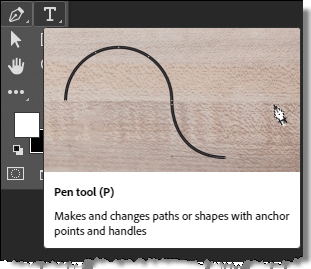
I. Pen Tool
With the Pen Tool, you can draw paths for use in your work. Print designers use the Pen Tool in Photoshop to draw paths around objects for their projects. Many print design software such as Quark and InDesign allow you to use clipping paths embedded from Photoshop so that there are no backgrounds around your images.

II. Freeform Pen Tool
With this tool, any shape can be drawn and any path can be created easily adding anchor points automatically.
III. Curvature Pen Tool
This tool enables users to create curved shapes with points. Users can create, edit, toggle, add, remove any curves without requiring any other tools.
IV. Add Anchor Point Tool
Add anchor point tool allows users to create, edit, spin any corner or segment they need to enlarge.
V. Delete Anchor Point Tool
Delete anchor point tool allows users to delete any corner or segment they need to remove.
VI. Convert Point Tool
This tool converts straight points to curve points and vice versa.
[dynamic_cta title=”How to Use Pen Tool in Photoshop to Make Clipping Paths?” button_text=”LEARN MORE” button_link=”https://offshoreclipping.com/blog/clipping-path-explained/” theme=”1″ background_image=”/wp-content/uploads/2019/12/Learn-more-background-color.jpg” text_color=”dark” text_align=”right”]
16. Shape Tools
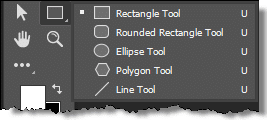
Different shape tools allow you to draw different shapes based on paths or vector shape layers, which gives you well-defined lines.
I. Rectangle Tool
The rectangle shape tool allows you to create a rectangle shape.
II. Rounded Rectangle Tool
The rounded rectangle shape tool allows you to create a rounded rectangle shape.
III. Ellipse Tool

The ellipse shape tool allows you to create a perfect rounded shape.
IV. Polygon Tool
The polygon shape tool allows you to create a polygon shape.
V. Line Tool
The line tool allows you to create a straight-line shape.
VI. Custom Shape Tool
The custom shape tool allows you to draw custom shapes.
17. Hand Tool
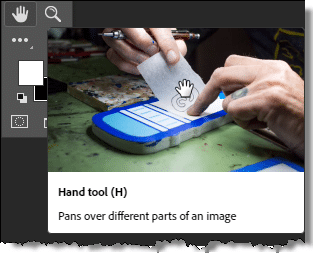
I. Hand Tool

The Hand Tool lets you move to any area of an image without accidentally dragging around a layer of an object on a layer. You can quickly switch to the Hand Tool any time just by holding the space bar.
II. Rotate View Tool
18. Zoom Tool
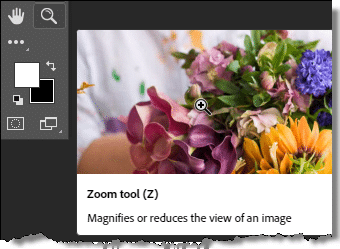
I. Zoom Tool

The Zoom Tool is used to zoom in and out of your image. It is most commonly used when you want to zoom in on a specific part of an image. You simply click and drag a selection of an image and Photoshop will zoom in on that area.
So there you have a discussion of the more commonly used tools. Take some time with your favorite images to explore these tools in Adobe Photoshop. Happy Practicing 🙂



